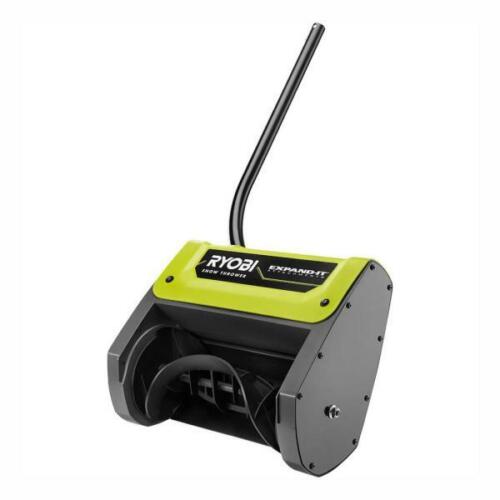Here is a frugal tip for those of you who are in the market for a powered snow shovel. Last fall I bought a Ryobi 40v snow shovel kit, with battery and charger and I got a good deal on it at the time. I wanted a second 40v battery for my Ryboi 40v chainsaw, so the complete kit made sense for me. However, if you don't want to buy the complete kit, or if you already have a different universal powerhead, you can buy the snow shovel attachment separately and save some money.
I have the Ryobi line of tools, but these ideas should work for any brand with universal attachments, Milwaukee, DeWalt, etc...
These power snow shovels are good for light snow blowing. They advertise up to 6 inches, which is pretty right on the mark. If you need to shovel a higher snowbank, then you can just take a bit off the top, like maybe 4 inches at a time, and work it down to the ground. That works well, too.
We got about 2 inches of snow last night, so I was out again today using my little powered snow shovel to clear parts of the driveway and the path out to the chicken coop in the backyard.
Instead of using the 40v powerhead that came with the kit, I decided to try my 18v powerhead that came with my 18v grass trimmer. I am happy to say that, for what I did today, there was practically no difference in performance of the snow shovel attachment. It still threw the snow plenty far enough off the path.
So, I can say that if you have a 18v or 20v powerhead, you can probably use one of these snow shovel attachments successfully. Of course, an 18v battery does not have the same runtime as a larger 40v battery, but I was surprised at how much I got done with my 18v battery before I had to swap it out with a fresh battery.
Well, there might be a difference in power with a 40v powerhead if I was blowing off a full 6 inches of snow, but for only 2 inches of fluffy new snow, the 18v powerhead did fine.
You can also use an electric or gas powerheads with those attachments. I have an electric powerhead, but I don't like having to drag a cord behind me. Also, the end of my driveway is like 100 feet from my nearest outside outlet, so it would take a very long cord. But the electric powerhead worked just fine, too.
If you are thinking about getting a powered snow shovel, I would highly recommend you get one that uses the universal attachment design. It will save you lots of money if you can just swap out the attachments on your powerhead compared to buying a single unit that cannot be used for anything else.

 As an RN, I had a job dealing with people with drug addictions. Soda might not be good for your health, but I don't remember anyone destroying their life by drinking pop. Some people are just more prone to addiction than others. I was lucky, I guess, because I just told Dear Wife one day that I was quitting soda pop - cold turkey - and never had an issue with it. Well, I had some soda-related headaches for a few days but no overwhelming need to drink more pop.
As an RN, I had a job dealing with people with drug addictions. Soda might not be good for your health, but I don't remember anyone destroying their life by drinking pop. Some people are just more prone to addiction than others. I was lucky, I guess, because I just told Dear Wife one day that I was quitting soda pop - cold turkey - and never had an issue with it. Well, I had some soda-related headaches for a few days but no overwhelming need to drink more pop. Eating raw chicken is something I have never considered! Does not sound safe from everything I have ever heard or learned in school. But I am willing to read any info you have on the subject.
Eating raw chicken is something I have never considered! Does not sound safe from everything I have ever heard or learned in school. But I am willing to read any info you have on the subject. OK. We are in agreement on this issue. People should cook chicken before they eat it. Raw chicken is probably fine for a dog. Maybe I misunderstood your previous post, but I wanted to be sure that, as far as I knew, people should always cook chicken before eating.
OK. We are in agreement on this issue. People should cook chicken before they eat it. Raw chicken is probably fine for a dog. Maybe I misunderstood your previous post, but I wanted to be sure that, as far as I knew, people should always cook chicken before eating.

